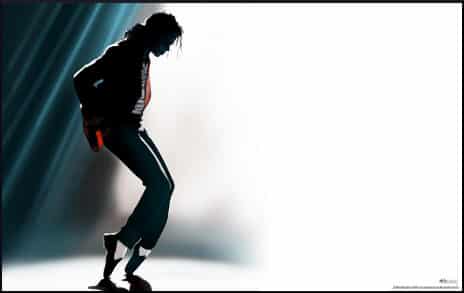
In 1983, the year after the release of the mega-famous Thriller album, the Jackson brothers made the biggest celebrity endorsement deal so far ($5 million) with Pepsi. The idea for such a marriage had first been proposed to Coca-Cola, which passed, probably to the corporation’s everlasting regret. Jackson rewrote the hit song “Billie Jean” to include the line, “Guzzle down and taste the thrill of the day.”
Guzzle down, indeed. The CEO who signed the megastar estimated that 97% of the American public saw the Jackson Pepsi ads at least a dozen times apiece. The following year, Jackson suffered serious burns when his hair caught fire during the making of a Pepsi commercial. One theory of his ultimate downfall holds that the terrible maiming incident triggered his addictions to both plastic surgery and painkilling drugs. In 1987-88, Pepsi paid $10 million to support the global “Bad” tour.
In 1993, the Michael Jackson Super Bowl halftime show was one of the most-watched performances in television history. By then, Jackson had been selling his talents to Pepsi for a decade, but the ride was over. In that year, the unseemly accusations surfaced. Jackson stopped touring, and Pepsi dropped him.
But a new generation of Pepsi consumers came along, who had forgotten or never heard of the scandal. In 2012, to celebrate the 25th anniversary of “Bad,” Pepsi made a deal with Jackson’s estate to put his image on a billion soft drink cans — including limited edition 16-ounce cans. Even of the larger cans, too many were manufactured to make them decently collectible. However, an unopened 1993 “Dangerous Tour” can is currently being offered on eBay for $125,000.
The saga of Pepsi’s relationship with Jackson is so enthralling that a movie is being made from it. When approached by soft-drink exec Roger Enrico, screenwriter Jesse Kornbluth conceived the project as “a film about business that could be, in form and theme, both meaningful and fun.”
America’s most important football show
The Super Bowl halftime shows used to be much more tame and middle-of-the-road-ish, with entertainment supplied by college marching bands and drill teams, and Up with People. In the mid-’80s a Hollywood spirit began to creep in, along with some diversity of form. Halftime talent included figure skaters, and more adult-oriented singers.
In 2007, the sponsor was Pepsi and the world-class artist was Prince. In 2013, Beyoncé and Destiny’s Child were the Pepsi-sponsored stars. In 2014, Pepsi paid for Bruno Mars and the Red Hot Chili Peppers. In 2015, Pepsi bought Katy Perry and Lenny Kravitz; and in 2016 paid a bundle to Beyoncé, Coldplay, and others.
The Sellouts is a 2:25 video montage, assembled by the Center for Science in the Public Interest, of dozens of celebrity endorsements of sugar-sweetened beverages. This piece of work could be shown to business majors, for the purpose of training advertising experts to make even more effective advertisements.
There is probably not much utility in showing it to, for instance, grade-school kids. CSPI’s final words are:
Children love celebrities. Their devotion brings celebrities success. That success comes with enormous responsibility. Celebrities shouldn’t use their influence to market a product that sickens their fans. Tell them to stop.
After the visual barrage of glamour, camaraderie, and happy feels, the message — worthy as it is — lands with a rather feeble impact.
Your responses and feedback are welcome!
Source: “Michael Jackson, Pepsi Made Marketing History,” Billboard.com, 07/03/09
Source: “Roger Enrico: How The Pepsi CEO And Michael Jackson Invented ‘New Coke’,” HuffingtonPost.com, 06/10/2016
Source: “Michael Jackson to Appear on Pepsi Cans,” RollingStone.com, 05/04/12
Source: “The Sellouts,” Youtube.com
Image by celebrityabc

 FAQs and Media Requests:
FAQs and Media Requests: 











